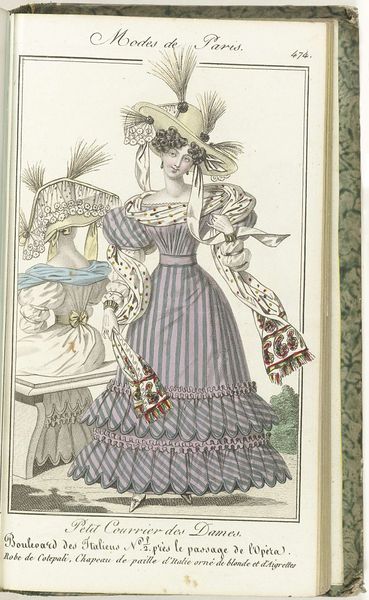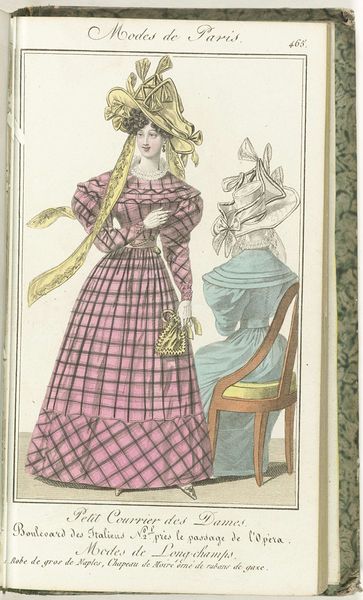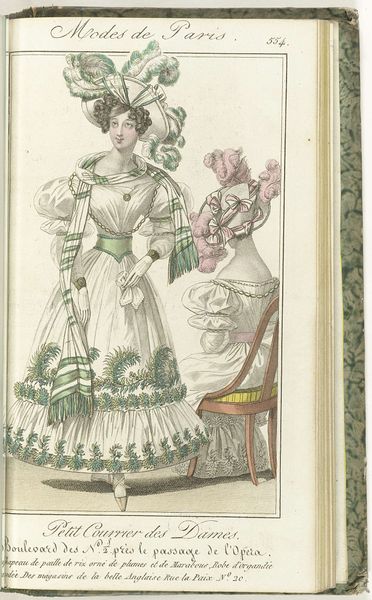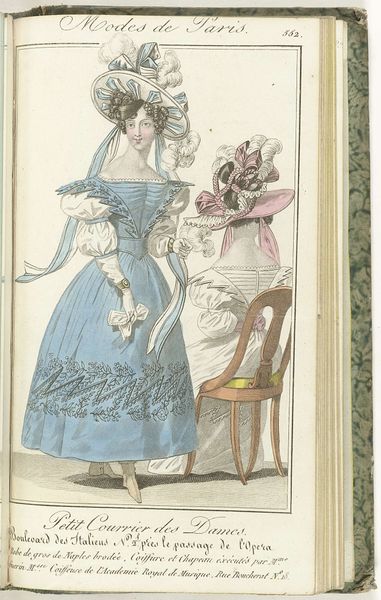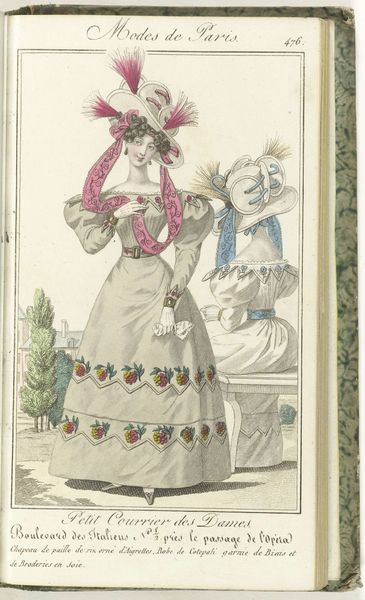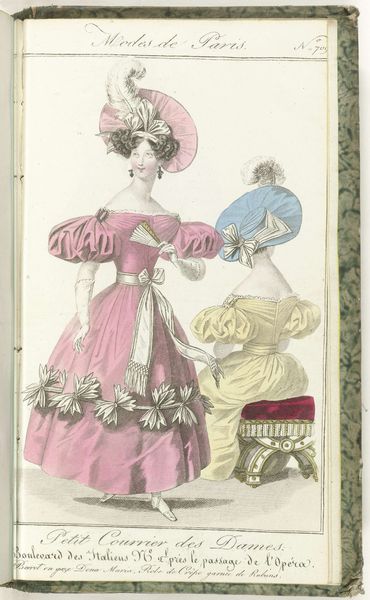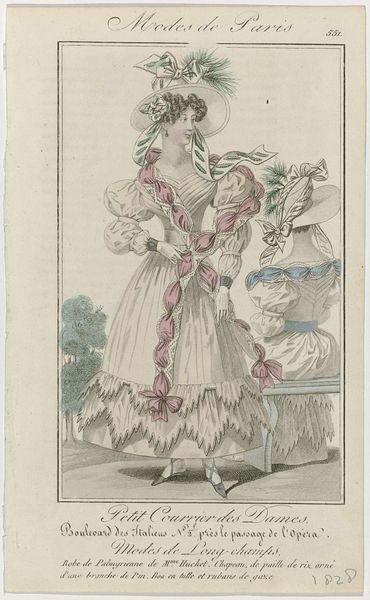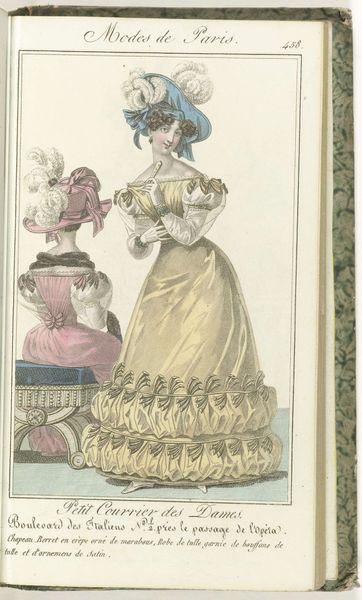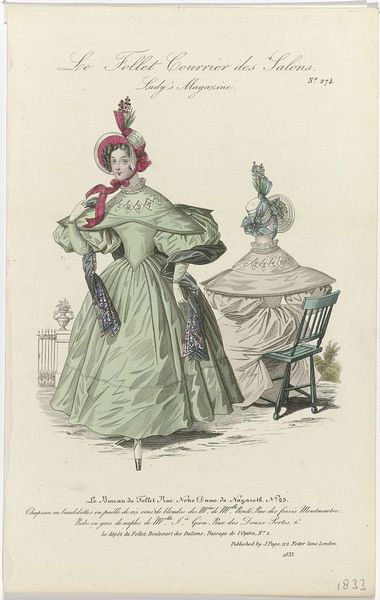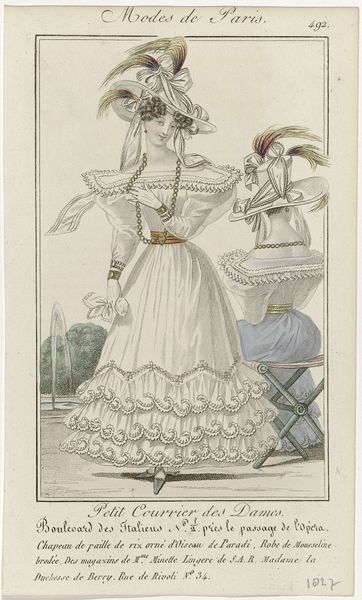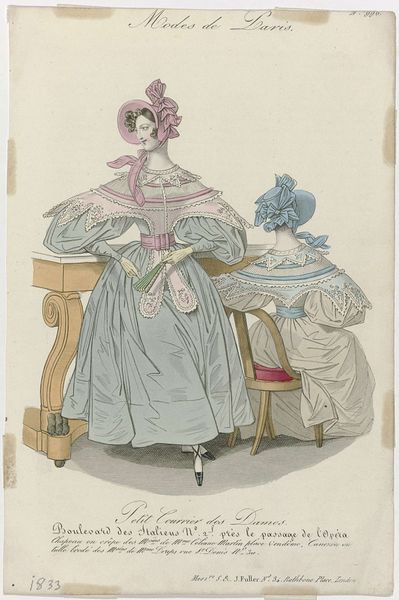
Petit Courrier des Dames, 31 janvier 1830, No. 698 : Chapeau de crêpe... 1830
0:00
0:00
drawing, ink
#
portrait
#
drawing
#
ink
#
coloured pencil
#
genre-painting
Dimensions: height 201 mm, width 113 mm
Copyright: Rijks Museum: Open Domain
Curator: Here we have "Petit Courrier des Dames, 31 janvier 1830, No. 698: Chapeau de crêpe..." dating from 1830, housed here at the Rijksmuseum. It's attributed to an anonymous artist, and done in ink and drawing, with some use of colored pencil, quite skillfully too. Editor: My first thought? "Excess!" In the best way. Look at the plush textures, the generous frills. It feels like a document of sheer, unabashed privilege. Curator: Precisely! Let's consider the materiality. We see crepe hats, velvet dresses, muffs – markers of a very specific, affluent social class. Note the drawing and printing techniques, how these garments, originally objects of labor, are transformed into objects of artistic and, later, consumer desire. Editor: And that desire is inherently political, isn't it? Think about the social upheaval of the time, the brewing revolutions. Fashion, then as now, became a battleground. Who had access to these luxuries? Who was excluded? These images are rarely neutral. Curator: Right. And it isn't simply about having the resources. Producing a garment like the velvet robe of the standing woman required specialized labour: the weaver, the dyer, the dressmaker – each step involving complex, skilled craft. Editor: Indeed. These women aren't simply wearing clothes; they are enacting a role, participating in a performance of wealth. I'm also struck by how contained it all seems, posed and controlled—almost as if the backdrop itself is as constraining as the fashion of the day. The drawing style contributes as well: a bit mannered, carefully detailed, serving to project an elite persona, distanced from labour and real life. Curator: The detail also allowed for easy mass reproduction of images, expanding the accessibility to aspirational fashion through prints like this one and expanding commodity culture to wider audiences. But this one remains quite small. It’s an intimate fashion plate, almost like a whispered secret for a select few. Editor: Exactly! What strikes me is the implicit dialogue happening between these images and our current visual culture. Even in the age of fast fashion and endless media circulation, questions of access, identity, and labour remain stubbornly relevant. It really highlights that what we consume truly carries heavy context with it. Curator: True enough. This small drawing manages to reveal surprisingly wide narratives around making and marketing in 1830’s Paris.
Comments
No comments
Be the first to comment and join the conversation on the ultimate creative platform.
